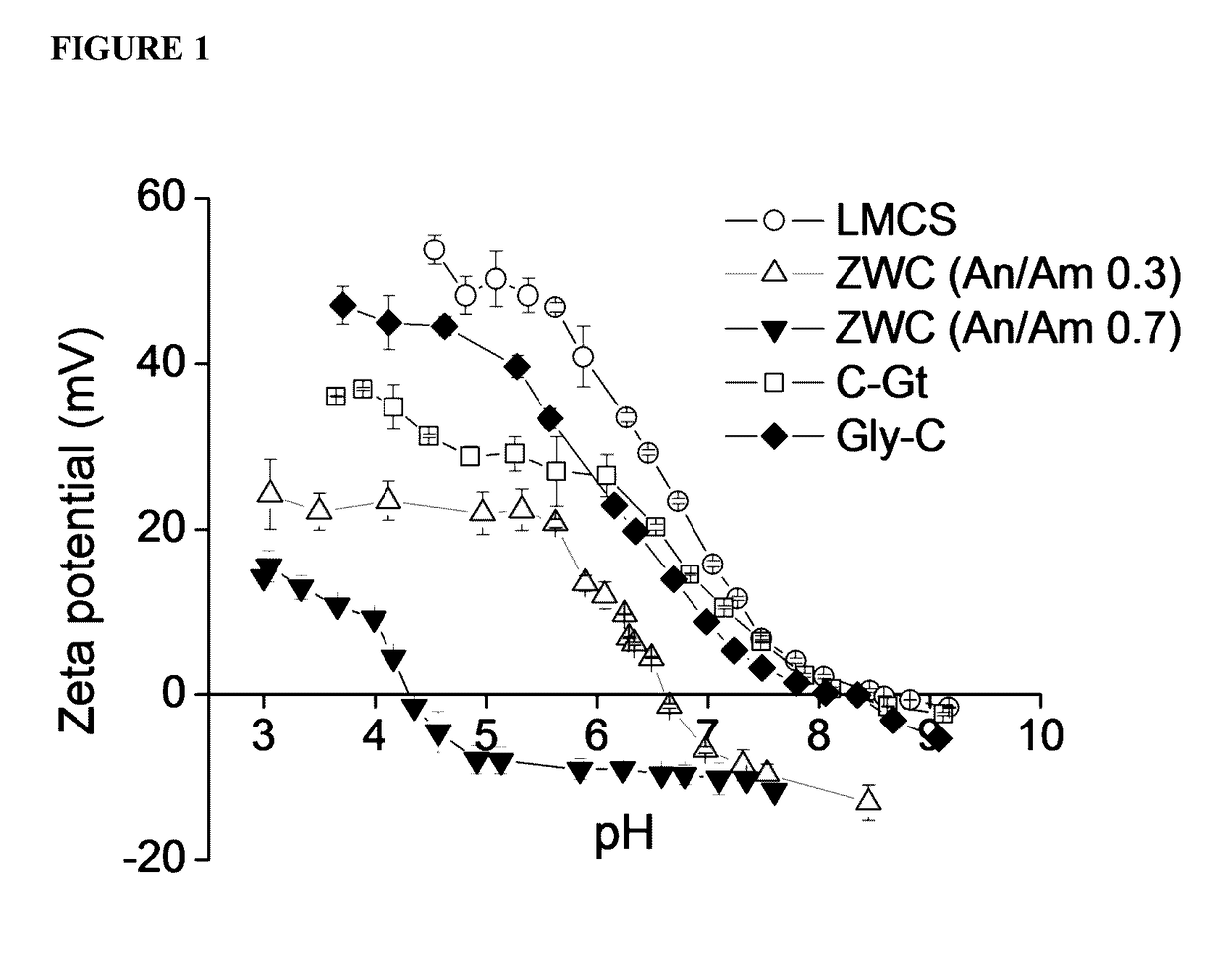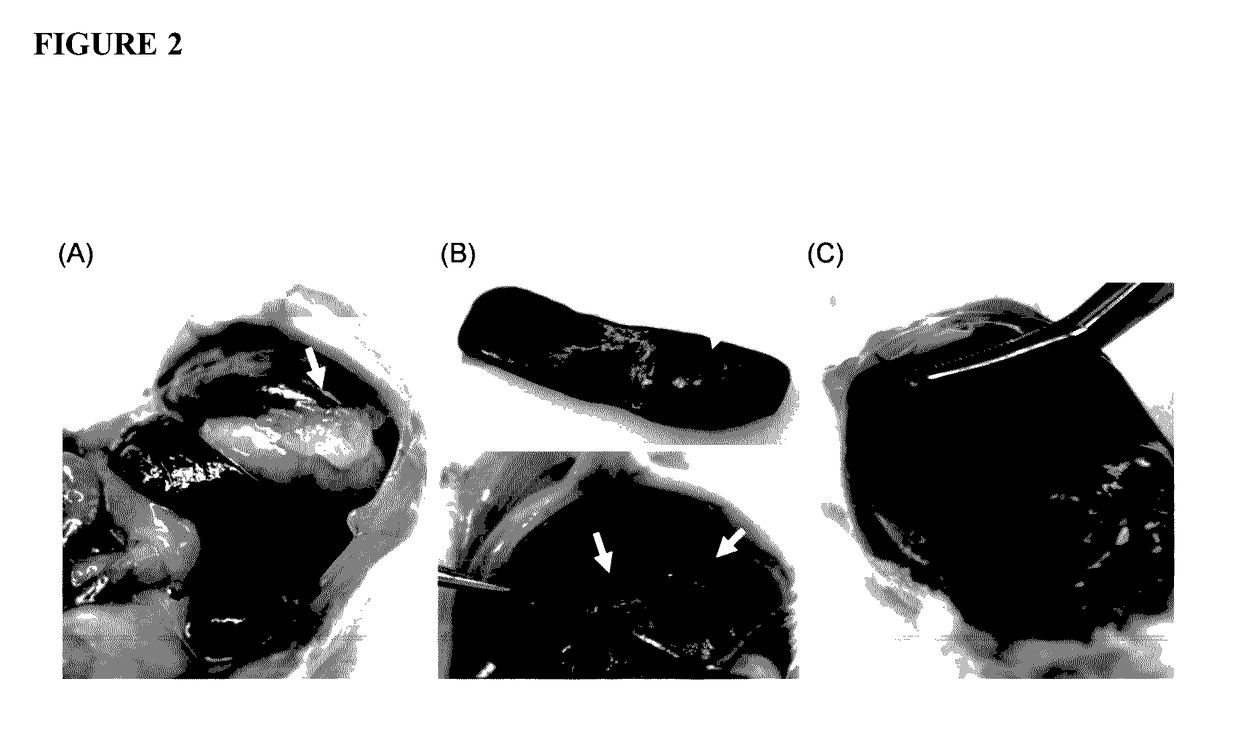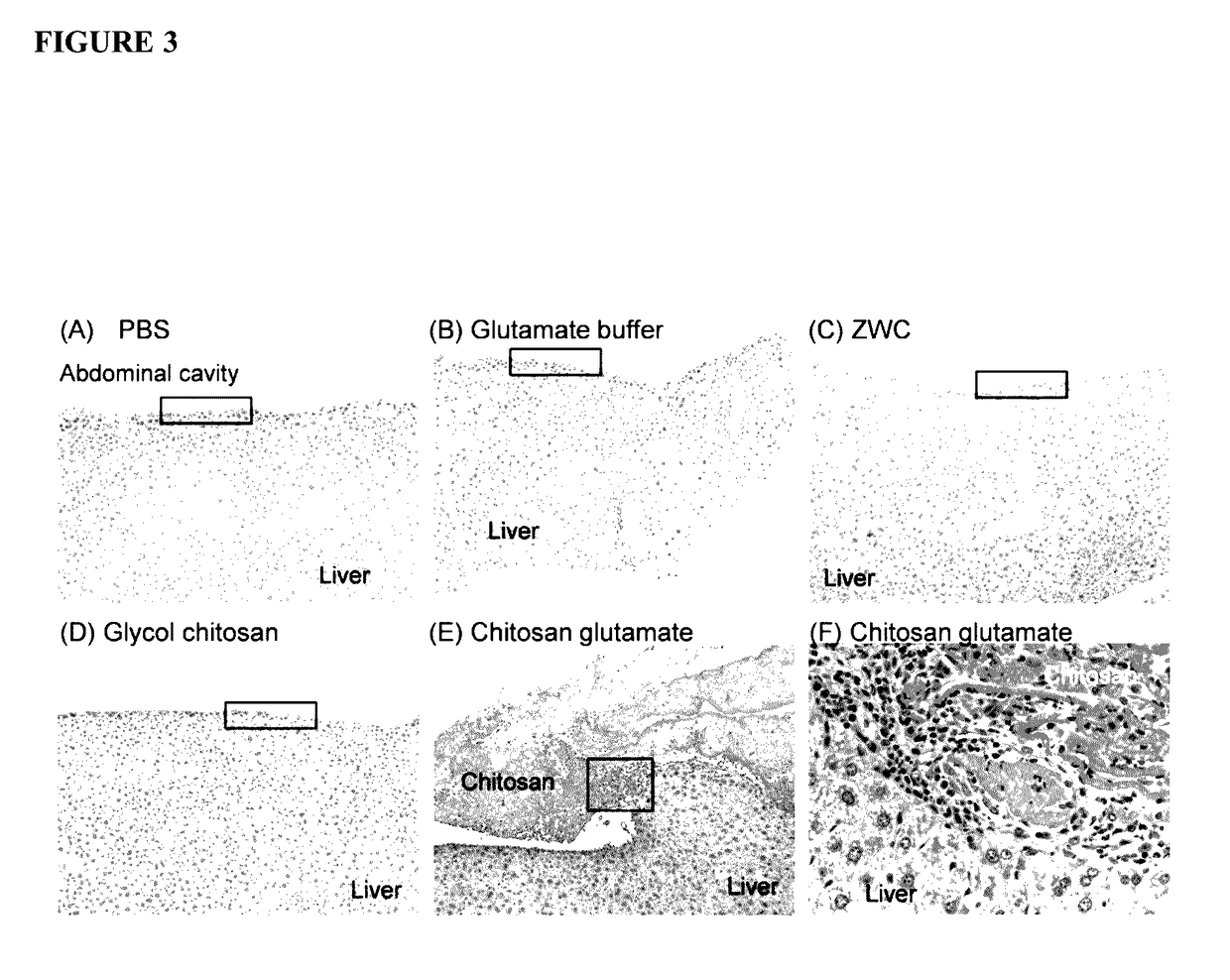Chitosan derivatives for inactivation of endotoxins and surface protection of nanoparticles
a technology of endotoxins and nanoparticles, which is applied in the direction of organic active ingredients, pharmaceutical delivery mechanisms, and nanoinformatics, can solve the problems of limited solubility, severe peritoneal adhesion in rabbits, and harmful biological effects of chitosans, and achieves excellent compatibility with blood components, reduces the potential for causing, and is well tolerated
- Summary
- Abstract
- Description
- Claims
- Application Information
AI Technical Summary
Benefits of technology
Problems solved by technology
Method used
Image
Examples
example 1
Formation and Properties of Chitosan and Chitosan Derivatives
Synthesis of Zwitterionic Chitosan Derivatives and Other Chitosans
[0282]In this example, chitosan derivatives were formed and analyzed. In particular, a zwitterionic chitosan (ZWC) derivative was synthesized. Briefly, low-molecular-weight chitosan (LMCS; MW: 15 kDa; degree of deacetylation: 87%; Polysciences) was first dissolved in 1% acetic acid to obtain an acetate salt form. LMCS acetate 200 mg was dissolved in 30 mL of deionized water. Succinic anhydride was added as solid to the LMCS solution under vigorous stirring varying the quantities according to the desired molar feed ratio of anhydride to amine (An / Am ratio). The pH of the reaction mixture was maintained at 6-6.5 and subsequently increased to 8-9 with 1 N NaHCO3 After an overnight reaction at room temperature under stirring, the reaction mixture was dialyzed against water (molecular weight cutoff: 3500) maintaining the pH at 8-9 with 1 N NaOH. The purified ZWC ...
example 2
In Vivo Properties of Chitosan and Chitosan Derivatives
In Vivo Biocompatibility and Gross Tissue Responses to Intraperitoneally Administered Chitosans
[0285]Chitosan glutamate, glycol chitosan, and ZWC were tested for tissue responses following IP administration (800 mg / kg). Chitosan and buffer controls (phosphate buffered saline (PBS), pH 7.4, or glutamate buffer, pH 5) were sterilized by aseptic filtration. Chitosan solutions (20 mg / mL) were prepared by dissolving chitosan glutamate in water or glycol chitosan and ZWC in PBS. ICR mice (25 g) (Harlan, Indianapolis, Ind.) were anesthetized with subcutaneous injection of ketamine 50 mg / kg and xylazine 10 mg / kg. A 0.5 cm skin incision was made in the skin 0.5 cm above the costal margin, and the peritoneum was nicked with a 24-gauge catheter. One milliliter of 20 mg / mL chitosan solutions or control buffers were injected into the peritoneal cavity through the catheter, and the skin was closed with suture.
[0286]The animals were sacrificed...
example 3
Chitosan Effect on Macrophage Proliferation
[0291]In an attempt to understand the difference in IP responses to chitosan glutamate, glycol chitosan, and ZWC, in vitro proliferation of peritoneal macrophages was evaluated in the presence of the three chitosans. Peritoneal macrophages were chosen because they are prevalent in the peritoneal cavity and likely to be an important player in inflammatory responses to IP injected chitosans. Mouse peritoneal macrophages were maintained in Dulbecco's Modified Eagle Medium (DMEM) supplemented with 5% fetal bovine serum and 5 mM HEPES. Cells were seeded in 24 well plates at a density of 50,000 cells per well in 1 mL culture medium. After overnight incubation, chitosan solutions (2 or 20 mg / mL) were added to make a final concentration of the medium 0.2 or 2 mg / mL. PBS and lipopolysaccharide (LPS) (1 μg / mL) were added in control groups. MTT assay was performed after 24 hours of incubation to determine the effects of chitosans on macrophage prolife...
PUM
| Property | Measurement | Unit |
|---|---|---|
| critical association concentration | aaaaa | aaaaa |
| critical association concentration | aaaaa | aaaaa |
| critical association concentration | aaaaa | aaaaa |
Abstract
Description
Claims
Application Information
 Login to View More
Login to View More - R&D
- Intellectual Property
- Life Sciences
- Materials
- Tech Scout
- Unparalleled Data Quality
- Higher Quality Content
- 60% Fewer Hallucinations
Browse by: Latest US Patents, China's latest patents, Technical Efficacy Thesaurus, Application Domain, Technology Topic, Popular Technical Reports.
© 2025 PatSnap. All rights reserved.Legal|Privacy policy|Modern Slavery Act Transparency Statement|Sitemap|About US| Contact US: help@patsnap.com



